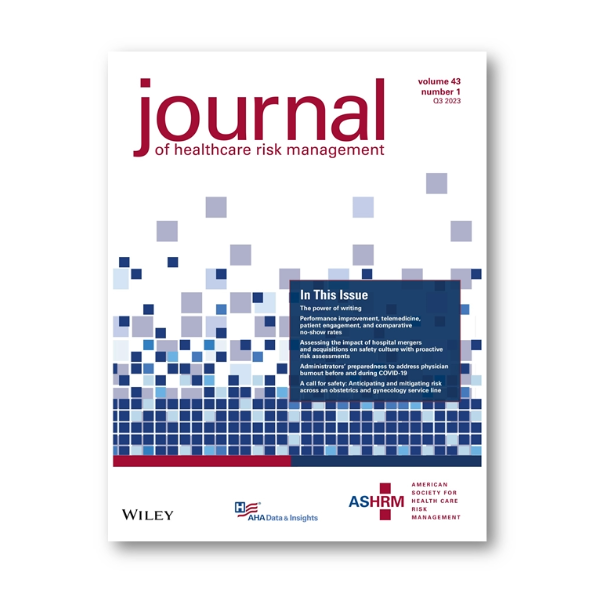A Call for Safety: Anticipating and Mitigating Risk Across an Obstetrics and Gynecology Service Line
Member: $19.00
CE Credit: 1
Domain: Clinical Patient Safety
Continuing education opportunity for the Q3 2023 issue of the Journal of Health Care Risk Management.
Article:
A call for safety: Anticipating and mitigating risk across an obstetrics and gynecology service line.
Volume 43, Number 1, Q3 2023
Contact Hours: 1.0 hour
Passing Score: 80%
Criteria for Successful Completion:
To receive CEs, participants must read the article within the Journal and achieve, an 80% on the quiz.
Continuing Education:
This program is approved contact hours toward the fulfillment of the requirements of ASHRM designations of FASHRM (Fellow) and DFASHRM (Distinguished Fellow) and toward CPHRM (Certified Professional in Health Care Risk Management) renewal. CE credit may be used toward CPHRM renewal only by those holding the credential at the time of the program.
Article Author:
Adriann Combs DNP, NNP-BC
Victor R. Klein MD, MBA, CPHRM
Questions? Contact ASHRM@aha.org

